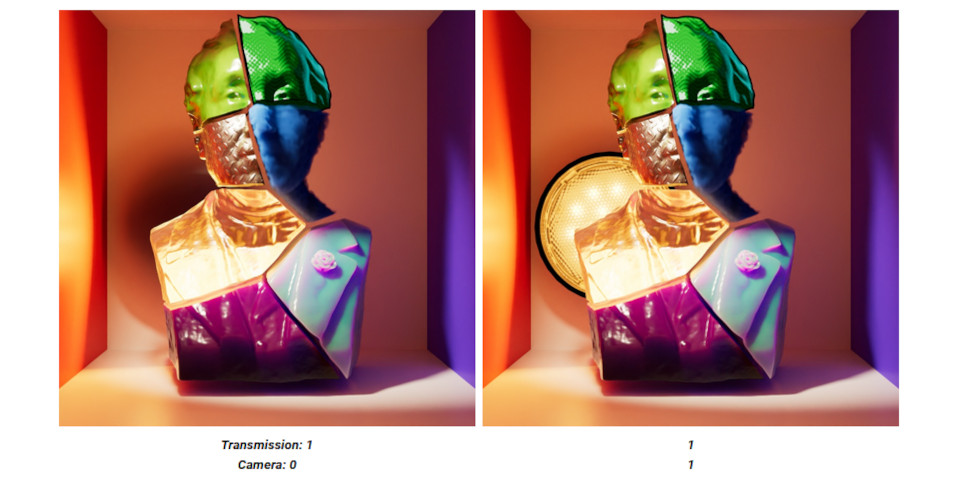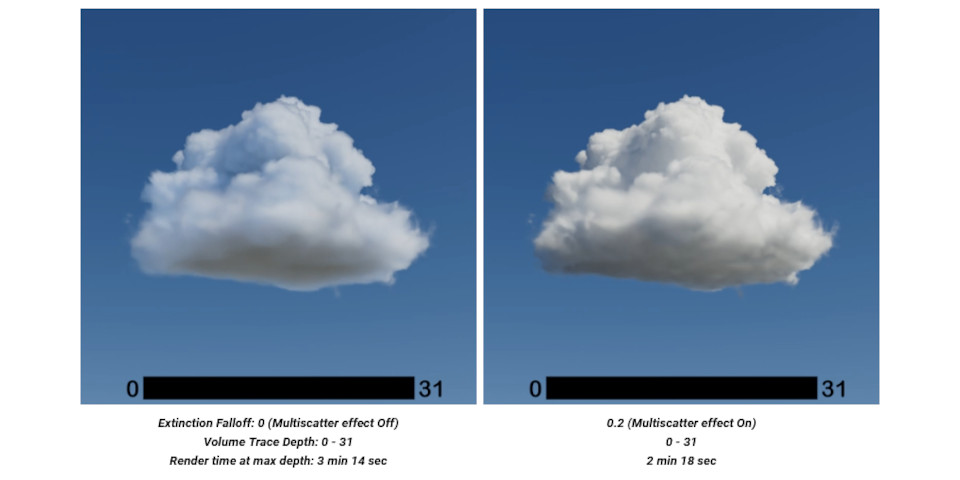Maxon releases Redshift 2025.3

Redshift 2025.3 reworks the renderer’s handling of Area lights, making it possible for the light they emit to be visible through transmissive objects without the light itself being visible.
Maxon has released Redshift 2025.3, the latest version of the GPU renderer for 3ds Max, Blender, Cinema 4D, Houdini, Katana and Maya.
The update reworks Redshift’s handling of Area and Dome lights, improves multiscattering in volumes, and adds support for the USD procedural in Maya as well as Houdini and Katana.
Area and Dome lights are now less dependent on camera visibility
Redshift 2025.3 reworks the renderer’s handling of Area and Dome lights, making their contribution to a scene less dependent on their visibility to the render camera.
Lights can now be visible in a scene, but not themselves cast shadows; or be invisible in a scene, but still be seen through transparent materials, as in the image above.

The new Extinction Falloff parameter improves multiscattering in volumes like clouds, making it possible to generate more realistic renders without an attendant performance hit.
Better multiscattering in volumes
The update also improves multiscattering in volumes, with both the Standard Volume and classic Volume shader getting a new Extinction Falloff parameter.
It reduces scattering and transmittance with successive bounces of volume rays, making it possible to simulate “hundreds” of bounces without the usual performance penalty.
The Standard Volume also now has a single Displacement input, making it possible to apply volume displacement to the volume and emission channels simultaneously.
Updates to the USD procedural
In addition, the Redshift USD procedural is now supported in Maya as well as Houdini and Katana, making it possible to load and render USD files using the RS Proxy.
The USD assets are then only loaded at render time, resulting in a lighter primary scene file.
The USD Procedural also now supports UsdPreviewSurface materials, and denoising and post effects.
Experimental support for NVIDIA’s new GeForce RTX 50 Series GPUs
The update also introduces experimental support for the GeForce RTX 50 Series, NVIDIA’s new consumer GPUs based on its Blackwell architecture, now becoming commercially available.
For Mac users, Redshift’s Alembic procedural is now supported on Apple Silicon processors.
Price and system requirements
Redshift 2025.3 is compatible with Windows 10+, glibc 2.28+ Linux and macOS 13.3+.
The renderer’s integration plugins are compatible with 3ds Max 2018+, Blender 3.1+, Cinema 4D R25+, Houdini 18.5+, Katana 4.5+ and Maya 2018+ (Maya 2022+ on Linux).
The software is rental-only, with subscriptions costing $46/month or $264/year.
Read a full list of changes in Redshift 2025.3 on the Redshift forum
(Login required)
Have your say on this story by following CG Channel on Facebook, Instagram and X (formerly Twitter). As well as being able to comment on stories, followers of our social media accounts can see videos we don’t post on the site itself, including making-ofs for the latest VFX movies, animations, games cinematics and motion graphics projects.
